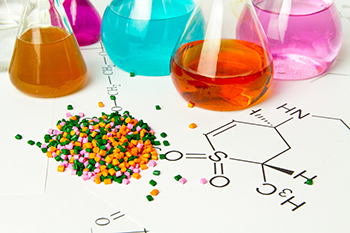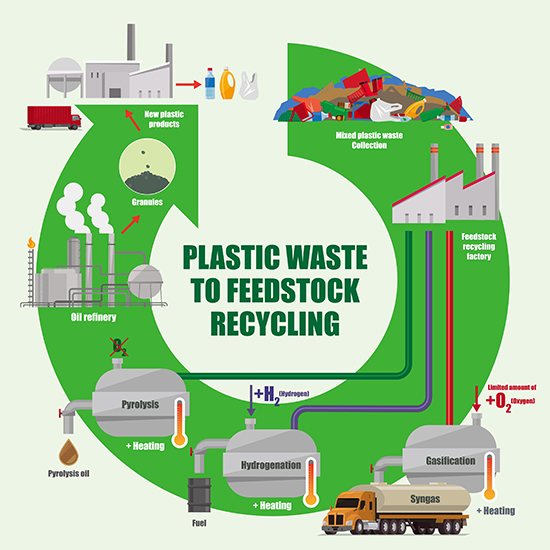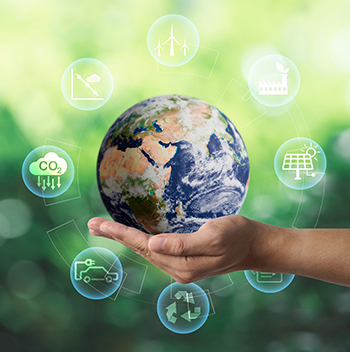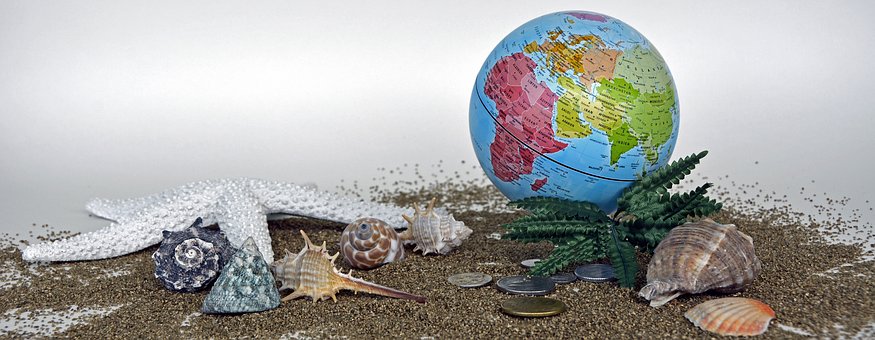Chemical Recycling
What is Chemical Recycling and Does It Really Work?
You may recall from previous articles in our series on “Our Planet”, to create plastic we build with polymers. There are two families of polymers used in plastics. The most common family are synthetic polymers (derived from petroleum, which we discussed in a previous article). There is also a family of polymers used in plastics that occur naturally, that is, they are made from living organisms. (We’ll be featuring these in the future.) These naturally occurring polymers are derived from proteins and carbohydrates.
There are also two primary types of recycling today, Mechanical and Advanced (Chemical). Mechanical recycling, in its simplest form, takes an existing plastic item, (such as a plastic water bottle) melts it down, and reforms it into the same item or a completely new item.
Mechanical recycling does not break the molecular chain of the plastic, it simply reforms it. In order to perform mechanical recycling effectively the same materials must be collected and cannot be cross-contaminated by other types of plastics. As little as one pound of the wrong plastic in a mechanical recycling operation can contaminate a thousand pounds of properly sorted plastic waste. There is another solution though. This solution has been around for nearly 70 years but has only gained widespread commercialization in the last few years. (See Plastics Recycling / Katherine Laird timeline about chemical recycling).
 Recycling is similar to the concept used to create plastics materials. We build with polymers and when recycling we need to break down the polymers. The individual polymers need to be identified so they can be appropriately recycled.[1] Essentially, the breaking down of the plastics is what chemical recycling does. As noted above, mechanical recycling changes the shape of plastics, but not the chemical make-up. Chemical or Advanced recycling in fact breaks down the plastics into the various original polymers. Chemical recycling changes the material structure of plastics. It further breaks down the plastics from polymers to molecules that can be used to make new plastics, synthetic fuels, and more.
Recycling is similar to the concept used to create plastics materials. We build with polymers and when recycling we need to break down the polymers. The individual polymers need to be identified so they can be appropriately recycled.[1] Essentially, the breaking down of the plastics is what chemical recycling does. As noted above, mechanical recycling changes the shape of plastics, but not the chemical make-up. Chemical or Advanced recycling in fact breaks down the plastics into the various original polymers. Chemical recycling changes the material structure of plastics. It further breaks down the plastics from polymers to molecules that can be used to make new plastics, synthetic fuels, and more.
It’s important to understand this difference. Mechanical recycling is successful in processing materials of the same makeup that do not contain other types of plastics. For example, a PET water bottle can be mechanically recycled with other PET water bottles. Advanced Recycling has the capability to process the mixed plastics. It takes all the less-recycled plastics - the mixed plastics - and breaks them down, which allows for a cleaner mechanical recycle stream.
Chemical or Advanced recycling consists of three different processes. Three main categories of the processes are:
- Solvent purification or solvent-based purification – plastic is dissolved in a solvent separating polymers from other components. The recovered polymers are further processed to create new plastics. This approach is used with polystyrene, #6 of the plastic types. (Note, previously labeled as not recyclable, which applies to mechanical recycling.)
- Chemical depolymerization – the polymer chain is broken down splitting the plastic into the original monomers. Both thermal and chemical reactions are applied to break the polymer chain. The monomers are recovered and purified for use to make new plastic. PET/polyester and other similar polymers have used this approach, but this can only be applied to certain types of plastic. A distinction between this approach and the solvent-based process is that the chemical process breaks down the polymers.
- Thermal depolymerization – heat is used to break down the plastic resulting in an oily mixture of chemicals that can be used to replace the traditional oil-derived naphtha. This is used for polyethylene and polypropylene, #1, 2, 4, and 5. Two types of thermal depolymerization are:
- Pyrolysis – High temperatures and low-oxygen conditions thermally degrade plastics. This produces a liquid/oil, which can be refined into fuels or further processed to create chemicals or plastics.
- Gasification – High temperatures with air or steam degrades plastics, producing a gas or syngas, a synthesis gas. This is processed into fuels or chemicals. [2]
 The development of these processes is in a very youthful stage. There are only 8 facilities in the USA (2021). Chemical recyclers are still trying to prove beneficial. In general, they report it complements traditional (mechanical) recycling by converting the hard-to-recycle plastics into raw materials. Food packaging, medical equipment and personal hygiene products can be made from this recycled material.
The development of these processes is in a very youthful stage. There are only 8 facilities in the USA (2021). Chemical recyclers are still trying to prove beneficial. In general, they report it complements traditional (mechanical) recycling by converting the hard-to-recycle plastics into raw materials. Food packaging, medical equipment and personal hygiene products can be made from this recycled material.
Concerns exist as to whether the results can truly be effective when considering the energy used, generation of hazardous chemicals and the disposal of such, how much can be recycled, and how it compares with traditional recycling. Some research has shown the “chemical recycling is worse for the environment than mechanical recycling in terms of greenhouse gas emissions and water use, and in some cases, worse than virgin plastic production.” This is contradicted by the claim that a third-party analysis by an environmental consulting firm found chemical recycling generated 19 to 49% fewer greenhouse gas emissions than the processing of crude-based feedstocks. (Note: neither the 3rd-party or recycler provided any document to support the claims.)
Chemical recycling, or advanced recycling, is controversial. Some report it is ineffective, inefficient, and should not be classified as recycling. Some say big money promoting chemical recycling only conceals the continued production of new single-use plastics by oil giants. Still others say it deflects attention away from the need to reduce single-use plastics. (See the single-use plastics topic in the “Our Planet” series.)
As recently as April 10, 2023, one of the largest chemical recycling plants in North America was launched. The momentum in advanced recycling is acelerating rapidly on a global scale. Significant commitments and legistlation is aiding expansion in this growing sector of recycling by empowering science and technology. This is important because it will be possible to recycle plastics that are currently not being recycled. Even more exciting, these can be recycled over and over and over again! With capacity to process 30,000 metric tons in the initial year, growth is projected to recycle 300,000 by 2025 and 3,000,000 by 2030!
As we move forward in the battle to protect the environment, traditional and advanced recycling will collaborate to reduce waste and improve our systems. It cannot be done without individual commitment and the solution requires working together. While this will remain controversial for years to come, you may recall the 1970's campaigns stressing that smoking is bad for your health. It took quite a while, but today there is almost no smoking allowed in public places. Meanwhile, other developments such as bioplastics are underway. We’ll talk more about that soon.
[1] What is a polymer? See “Our Planet” series, article titled, “Crude Oil – The Original Plastic Source - Where Does it Come From?”
[2] Exxon’s new ‘advanced recycling’ plant raises environmental concerns | ExxonMobil | The Guardian

